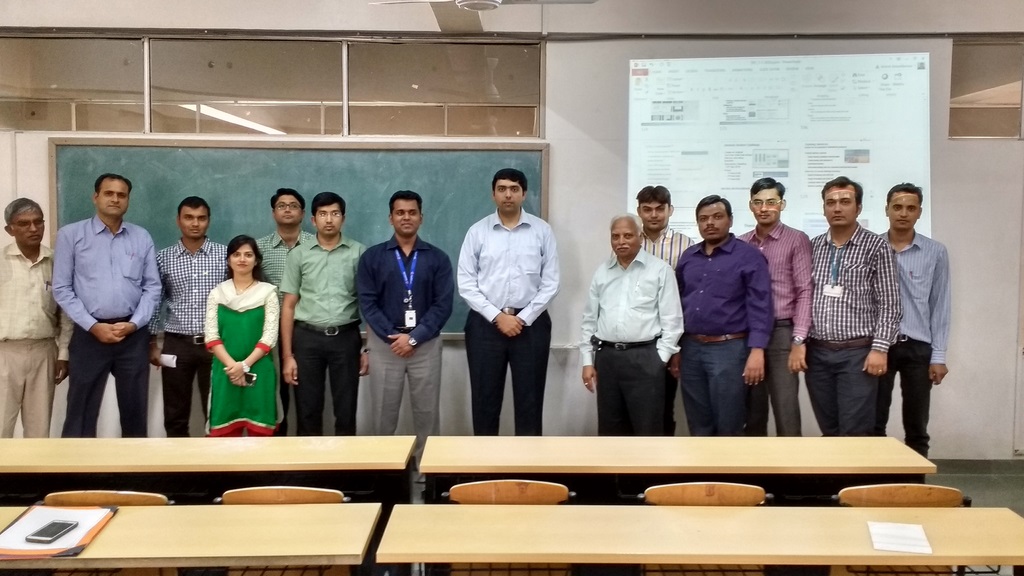Electronics & Communication Engineering Department organized an expert lecture on 7th January 2016 on the topic “Signal Processing and Communications System Design using MATLAB and Simulink”
The speaker was Dr. Amod Anandkumar, Senior application engineer at MathWorks, India, focusing on signal processing, computer vision, and communications. Earlier, he was a lead engineer with the Advanced Technology Group at Samsung Research India, Noida for 1.5 years where he developed physical layer techniques for LTE wireless communication systems and novel healthcare applications for smartphones. He was also a Postdoctoral Research Fellow at the Biomedical Signal Analysis Lab, GE Global Research, Bangalore, working on advanced beamforming techniques for ultrasound imaging and novel signal processing solutions for ICU patient monitoring systems, resulting in one U.S. patent filing.
Dr.Amod covered the following Topics in his expert lecture:
- Real-time signal processing in MATLAB using system objects: Stream processing in MATLAB, including dividing the stream source into frames and processing each frame in a loop with the efficient use of memory and computations. Examples of applications that use stream processing include audio enhancement, wireless baseband processing, object tracking, and radar beam forming.
- Antenna-to-bits design capabilities to model and simulate advanced wireless communications systems such as LTE and WLAN: These capabilities enable wireless and radar engineers to design systems that incorporate multiple antennas, smart RF devices, and advanced receiver algorithms. New hardware support features enable designers to connect MATLAB algorithms to SDR devices and RF instruments, and to verify them with over-the-air testing with a range of custom waveforms.
- Connectivity to hardware platforms such as SDR and Raspberry Pi: With Communications System Toolbox Support Package for RTL-SDR Radio, you can use MATLAB and Simulink to design and prototype systems that process real time wireless signals. For example, you can receive and process wireless signals such as FM radio, airplane surveillance signals (ADS-B), and signals from smart meters (water or energy metering devices). You can also deploy your system on a low cost, single-board computer, such as Raspberry Pi, that has an RTL-SDR attached to it.
